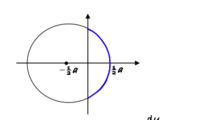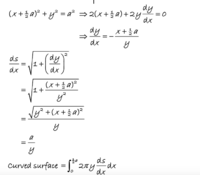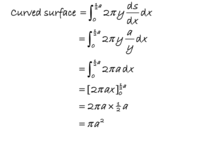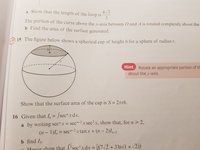
I think this question is best solved using the polar form of the equation for surface area.
I have the polar form of the cartesian equation. I have [MATH](rcos \theta +1/2a)^2 +(r^2sin^2\theta)=a^2[/MATH].
Now to use the formula I need [MATH]dr/d\theta[/MATH].
I am unsure who to get the derivative I need.





